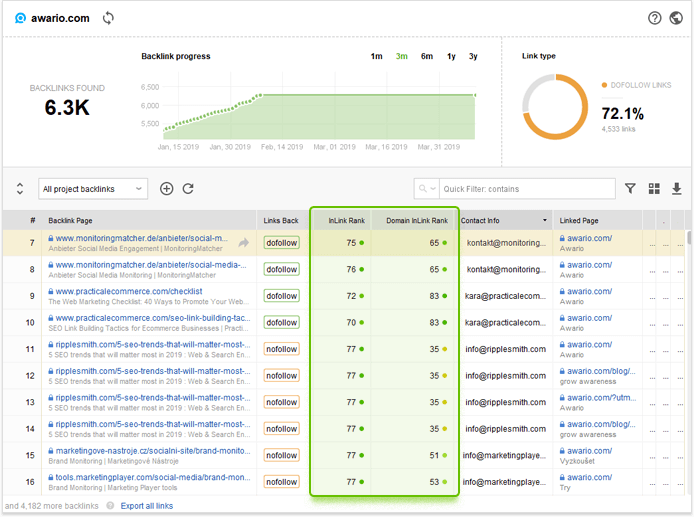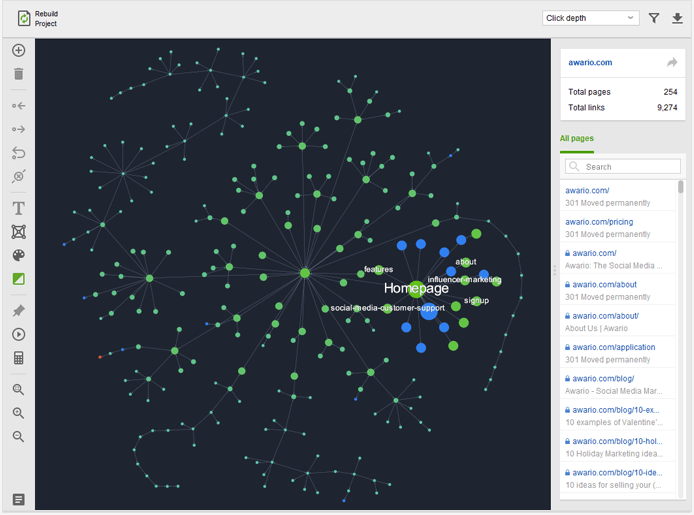Google has been using the page ranking algorithm to best serve their clients with the most relevant search result. There was a time when page ranks are still visible to all users – it was no longer a thing after 2010 that Google hid all of them. However, not being visible does not mean that Google has stopped using it. According to Erika, not only that Google kept the PageRank algorithm after 2010, it is indeed updated in recent years and still plays a very important role in serving clients with the best search results in 2020. [1]
Many companies have tried to guess the latest Google’s page ranking algorithm. Some of them even developed their alternative algorithms. One example is SEO PowerSuite. Their self-owned Domain InLink Rank provides an alternative way to rank the most valuable pages. Similar to Google’s old page rank algorithm, it takes the number of incoming edges and their weights into account to calculate a page’s rank. However, there is no detailed formula found online that well-explained how these factors work exactly in the formula. Instead, this blog post is interested in one of the experiments conducted last year by SEO PowerSuite on how well their Domain Inlink Rank algorithm performed compared to Google’s SERP (Search Engine Result Pages). [2][3]
The experiment targeted around 33500 keywords and their search results. Only the first 30 results from each keyword search were kept, which results in over 1 billion pages. After comparing the results produced by the Domain Inlink Rank algorithm and by searching on Google, it turned out that they are positively correlated with a correlation coefficient of 0.128. This indicates that a page is likely to be ranked higher if it is also ranked high among all search results in Google. However, according to the definition of the correlation coefficient, any value under 0.3 is considered “weak”. Therefore, a coefficient value of 0.128 does not make a significant point.
Despite that, after comparing the experiment results from other page ranking algorithms, SEO makes a fair point that its InLink Rank algorithm has better performance than other alternatives. Comparing the “next best competitor” after SEO PowerSuite, Moz has published their experiment results on similar setups. It turned out that their highest correlation coefficient (0.12076) was even weaker by relatively 6%.

Image source: https://cdn1.link-assistant.com/images/news/google-page-rank-2019/screen-07.png
Aside from that, it is interesting to find out that SEO PowerSuite has been working on detecting spamming hub pages and providing some proper instruction for web page owners to improve on their page rank. The top two approaches are qualifying backlinks and making use of internal links.
On the one hand, backlinks refer to those the website points to. Under this InLink Rank model, all websites are authorities and hubs at the same time. Frequently checking if any of them has a low-rank score and removing those links that point to low-quality sites can prevent loss of page rank on the next round of page rank update. A tool named “SEO SpyGlass” checks InLink Rank scores for those backlinks, as well as for potential risks and errors for backlink pages’ authority.

Image source: https://cdn1.link-assistant.com/images/news/google-page-rank-2019/screen-10.png
On the other hand, taking good use of internal links can save a lot of time. It is described that internal links act like a “page rank storage” under the InLink Model. To maximize the use of internal links, it is important to make sure there are no orphan pages under control because that will be a waste of source. Having pages linking to each other under a website makes sure page rank flows between pages. A tool named “WebSite Auditor” visualizes such processes and makes it easier to find any orphan pages.

Image source: https://cdn1.link-assistant.com/images/news/google-page-rank-2019/screen-16.png
It is exciting to see the materials we just covered in the lecture (3 days ago) are doing some work in the real world industry. It is also important in helping me understand these articles and diagrams better since they are so closely related to what we learned. All sources are put under “Reference” below, please feel free to dig in and read more!
Reference
1. Some description of Google PageRank and why it is still important:
https://www.semrush.com/blog/pagerank/
2. The experiment on Domain InLink Rank:
https://www.link-assistant.com/news/inlink-rank-correlation.html
3. The analysis of the experiment, and more relative materials:
https://www.link-assistant.com/news/google-page-rank-2019.html